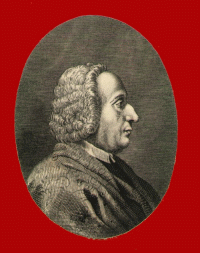Eustachio Manfredi
(Fabrizio Bňnoli)
 Fig. 1: Eustachio Manfredi. (Credit: Archives of Astronomy Dept, Bologna University) |
|
|
|
| Fig. 2:
Drawing of Jupiter by Manfredi, from the "Record of Observations" of the Marsili Observatory,
dated 20 September 1703. (Credit: Archives of Astronomy Dept, Bologna University) |
Eustachio Manfredi was born in Bologna in 1674. He attended the Jesuit school and then obtained a degree in civil and canon law.
He studied Mathematics and Hydraulics with Domenico Guglielmini and was also interested in astronomy from an early age; he was practically self-taught in this subject, given that the teaching of astronomy in Bologna had been neglected since the departure of Gian Domenico Cassini for Paris and of Geminiano Montanari for Padua.
In 1699 Manfredi was appointed Professor of Mathematics and in 1737 Professor of Astronomy. He held the titles of Pro-rector of the Montalto Pontifical College and Water Superintendent.
He is remembered for his contribution to the theory of the annual aberration of the stars (a term which Manfredi himself coined), which proved that the Earth moves around the Sun.
In recognition of the vastness of his work and his scientific merit, which helped Bologna to become an important astronomical centre on a European scale, Manfredi was made a member of the Académie des Sciences and the Royal Society of Sciences.
Manfredi had an eclectic personality - he was an expert observer of the sky, a geographer and geodesist, he was interested in philosophical matters and he wrote poetry. To be noted amongst his writings are the "Rime del Dottor Eustachio Manfredi", mentioned by Leopardi in his work "Zibaldone".
In recognition of his literary worth, he was made a member of the Crusca Academy.
Manfredi’s university lectures were collected in a massive work under the title of Istituzioni Astronomiche, published ten years after his death in 1739.
|
|
(Eustachio
Manfredi - page 1 of 4)
| Forward > |

